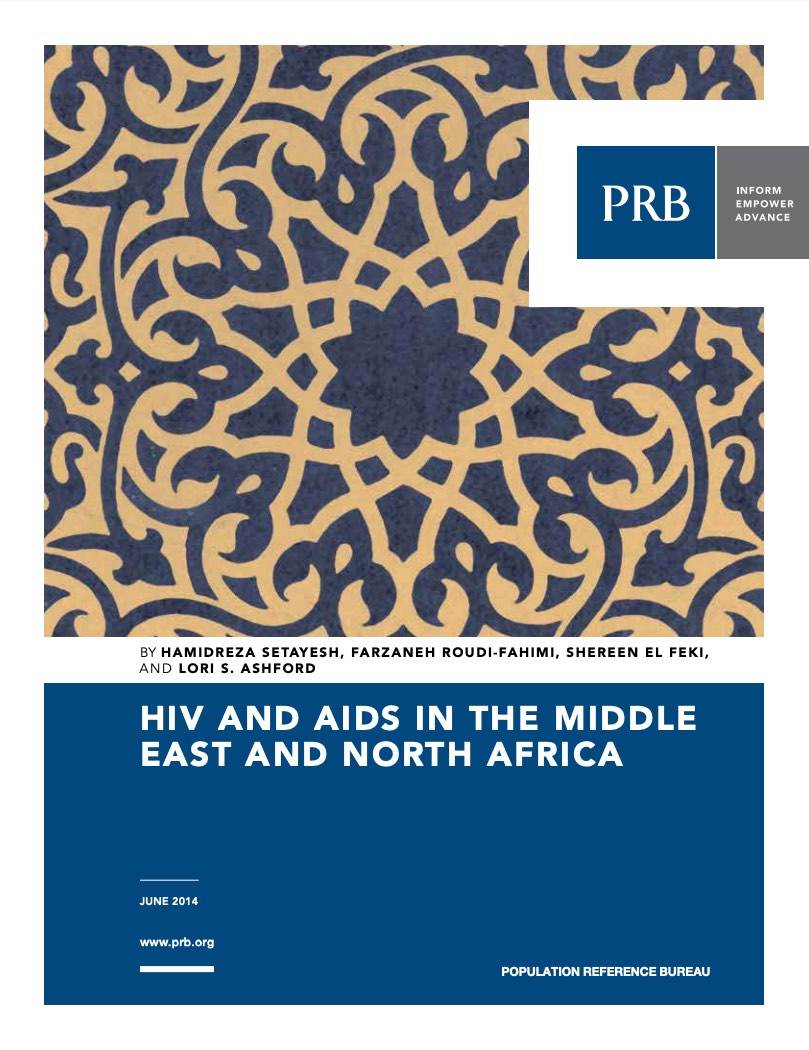
HIV and AIDS in the Middle East and North Africa
Date
June 23, 2014
Author
Focus Area
(June 2014) Around 270,000 people were living with HIV in the Middle East and North Africa (MENA) as of the end of 2012, according to the Joint United Nations Programme on AIDS (UNAIDS). This translates to an overall HIV prevalence of 0.1 percent among adults ages 15 to 49, one of the lowest rates in the world. But other statistics tell a different story. Between 2001 and 2012, the number of new infections in MENA grew by 52 percent—the most rapid increase in HIV among world regions.
AIDS-related deaths are also on the rise, more than doubling in MENA between 2001 and 2012 (see table), while declining by 16 percent worldwide. The increase is due in large part to low levels of antiretroviral therapy (ART)—a combination of medicines that extends the lives of those infected with HIV and reduces the likelihood of transmission of the virus. On average across MENA, only one in five people in need of ART is receiving it—the lowest coverage rate among world regions. Coverage is particularly inadequate for women and children: Less than 10 percent of pregnant women living with HIV receive antiretroviral medicines to prevent HIV transmission to their newborns—also the lowest rate among world regions.
HIV in MENA
| 270,000 | Adults and children living with HIV in MENA in 2012, a 134 percent increase from 114,000 in 2001.1 |
| 16,500 | AIDS-related deaths in 2012, a 176 percent increase from 6,000 in 2001.2 |
| 18% | Coverage of antiretroviral therapy among adults and children who needed the treatment at the end of 2012, with 20,000 people on treatment. |
| 8% | Coverage of antiretroviral therapy among pregnant women who are living with HIV to prevent transmission of HIV to their babies, and keeping mothers alive, with almost 700 pregnant women receiving the treatment in 2012. |
1 Range: 80,000-190,000 in 2001 to 200,000-380,000 in 2012.
2 Range: 3,000-11,000 in 2001 to 11,000-26,000 in 2012.
Source: UNAIDS, 2013 Regional Report for Middle East and North Africa.
Key Points
- Rates of HIV infection in the Middle East and North Africa (MENA) are among the lowest in the world, yet MENA is one of only two world regions where HIV is still on the rise.
- Infections are spreading in every country, though the principal routes of transmission vary.
- MENA countries cannot count solely on their cultural and religious values to safeguard their populations against the HIV infection.
The Way Forward
To eliminate HIV in their countries, MENA governments now have the opportunity to:
- Learn from successful experiences within the region.
- Expand the coverage of HIV treatment and improve the quality of care to ensure patients’ adherence to treatment.
- Review existing laws and policies that deter people living with HIV from using public health services.
- Promote anti-stigma campaigns to influence public opinion through the media and by engaging the religious community.
- Include sexuality and reproductive health education in school curricula.
- Demonstrate the political courage to focus the national response on the populations most affected by HIV.
- Invest in collecting information that helps make smarter investments, directing resources toward the right programs for the right populations.
For the HIV response to be effective, MENA governments will need to involve many sectors, from ministries of interior, justice, labor, and education to the parliament, law enforcement agencies, and prisons. NGO partners should include human rights and social justice groups, women’s groups, migrant groups, justice reform groups, and labor unions to protect the rights of people living with or most at risk of HIV. The HIV response should include helping individuals and institutions gain legal literacy, because they need to be fully aware of rights, able to demand them, and seek redress when they are violated. The participation of people living with HIV and civil society organizations is crucial to the legitimacy and acceptability of HIV policies and programs, and thus to their effectiveness.
Justice, human rights, and gender equality are the hallmarks of an effective global response to the HIV pandemic and the catalyst for progress in countries. Taking a rights-based approach can ensure that national and international resources support programs that have the biggest impact in terms of caring for people living with HIV and reaching those who are most at risk. The programs with the greatest potential effect are those that recognize and respect human rights.
The MENA region has an opportunity that millions around the world are literally dying for: to stop HIV in its tracks. MENA is at a turning point in history; in public health as in politics, the coming years are critical.
Hamidreza Setayesh is UNAIDS director for Sudan and former regional advisor for Strategic Information and Human Rights for UNAIDS in MENA. Farzaneh Roudi-Fahimi is program director for the Middle East and North Africa at PRB. Shereen El Feki is author, broadcaster, academic, and former vice chair of the Global Commission on HIV and the Law. Lori S. Ashford is an independent reproductive health consultant.

 ">
">